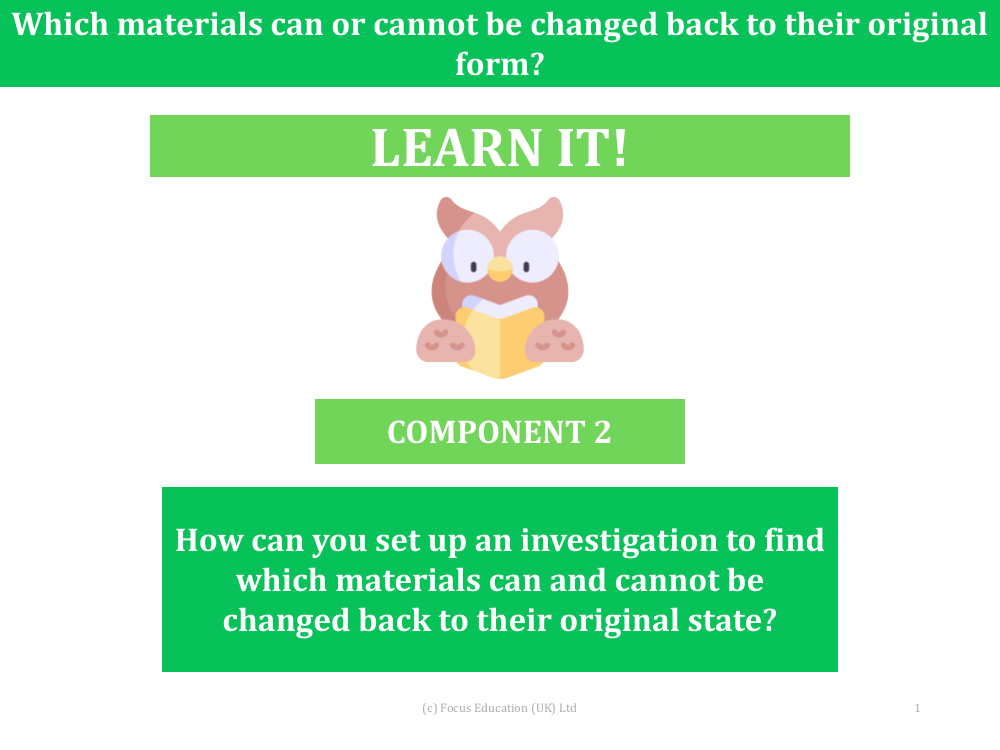How can you set up an investigation to find which materials can and cannot be changed back to their original state? - Presentation

Science Resource Description
To investigate the reversibility of changes in materials, an experiment can be set up to assess which materials can be returned to their original state after undergoing a physical change. Begin by examining the properties of common materials such as iron, aluminium, wood, plastic, glass, sugar, flour, salt, bread, brick, wool, and cotton. Assess each material's hardness, solubility, transparency, and electrical conductivity. The experiment will focus on a subset of these materials, including salt, sugar, vinegar, sand, and fruit juice, to determine how they interact with water when they are frozen and subsequently when they are heated.
For the freezing test, add each of the selected materials to a fixed amount of water and freeze the mixture. In groups, pupils should ensure a fair test by controlling variables and clearly documenting their methodology. After observing the results, pupils will discuss the fairness of the investigation and describe the outcomes. The materials will then be added to boiling water under close supervision to observe the changes. This investigation will provide insight into the processes of dissolving, filtering, and evaporating. The findings will be recorded, along with diagrams and reflections on how the experiment could be improved in future attempts. The ultimate goal is to determine which materials can revert to their original form after being subjected to freezing and heating.





